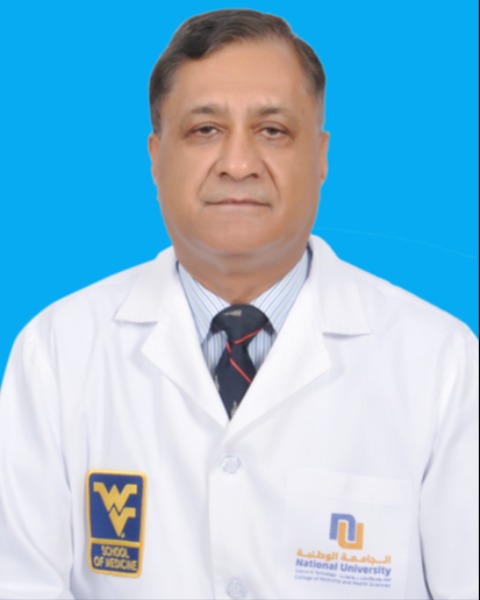
Najam N. Siddiqi, MBBS, PhD
Professor and HOD
National University of Science and Technology, Oman
Prof. Najam Siddiqi, HOD, Department of Anatomy and Neurobiology, College of Medicine and Health Sciences, National University of Science and Technology, Sohar, Oman
Research experiences: 1988-1992 (Japan)
1. Flexor tendon healing after repair in an animal model
2. Electron microscopic studies on tendon healing
3. Prevention of peritendinous adhesions using different methods
4. Gait training in the disabled using a gait training robotic device
5. Use of Orthofix external fixator in multiple trauma patients
6. Early mobilization of multiple trauma patients using a gait training robot
1992-1995 (USA)
1. Hip and Knee joint kinematics
2. Oxygen consumption during walking using a computer-aided gait training device (REHABOT)
3. Computer-aided preoperative planning for osteotomies of the lower extremity
4. Parameters for distal femoral and proximal tibial allograft size matching
5. Long bone dimension studies in Caucasians and Oriental populations
2006 (Wits University) South Africa
1. Long bone dimension studies in African Tribes
2006-2018 (Oman Medical College) Oman
1.Effects of electromagnetic waves on rapidly multiplying stem cells
2.Quality assurance in medical education
3.Internet based Examination delivery system
4.Teaching Human Anatomy in 16 weeks block: pros and cons
5.Using videos as a teaching tool in gross anatomy
6.Electron microscopic study of cardiac muscle, liver and brain tissues on developing chick embryo exposed to mobile phone electromagnetic waves
7.Long bone dimension study comparing Caucasians and Oriental populations on femur, tibia and humerus.
8.Prevalence of smart phone use by the teenagers and college students in Oman
9.Effects of electromagnetic waves on the human sperm
2019-2023 (National University)
1.The Effect of Commercial Cow's Milk on The Proliferation of Triple Negative Breast Cancer Cells and Insulin like Growth Factor 1 (IGF-1) levels in Vitro
2.Variations in the middle cerebral arteries in cadaveric brain specimens
3.Variations in the early cortical and perforating branches in middle cerebral arteries
Poster(s):
-
Sunday, March 24, 20245:00pm - 7:00pm US EDT

